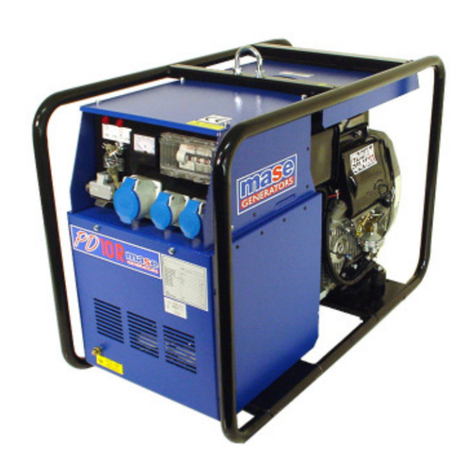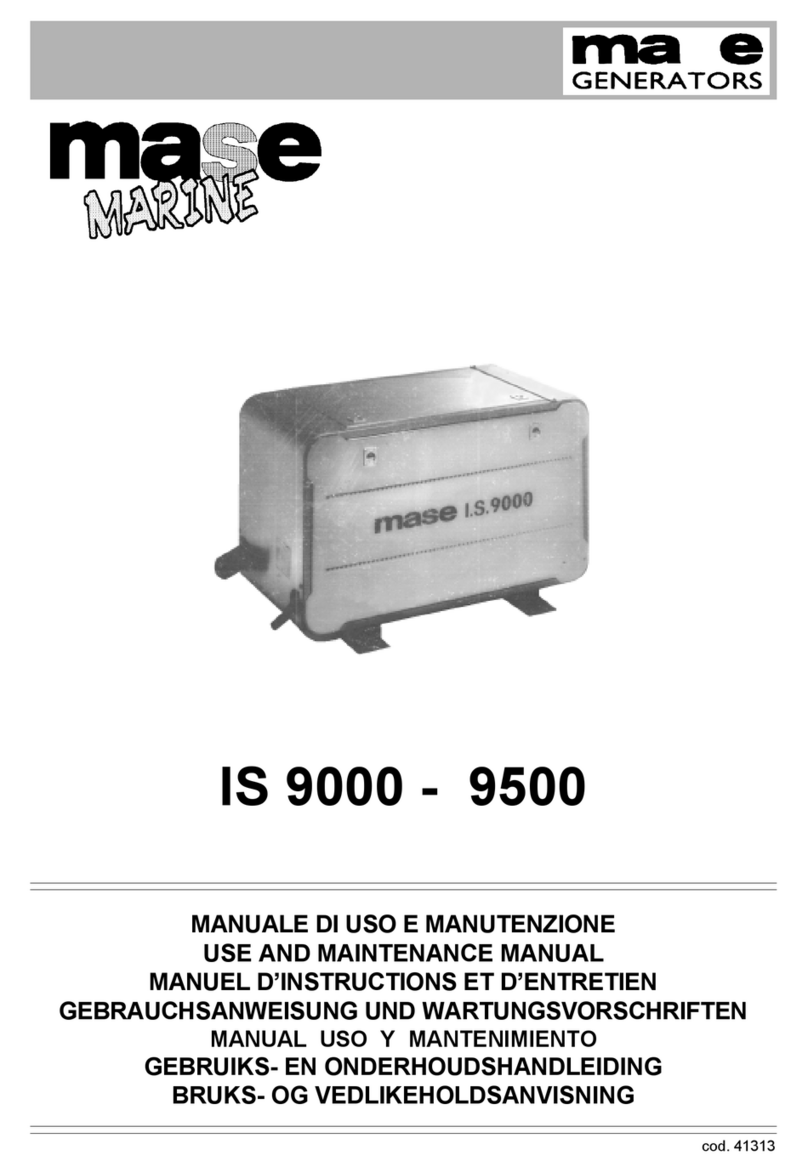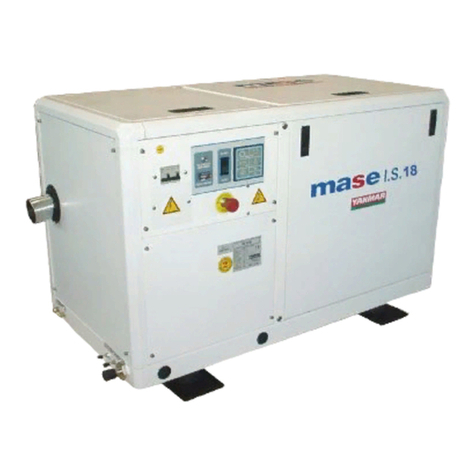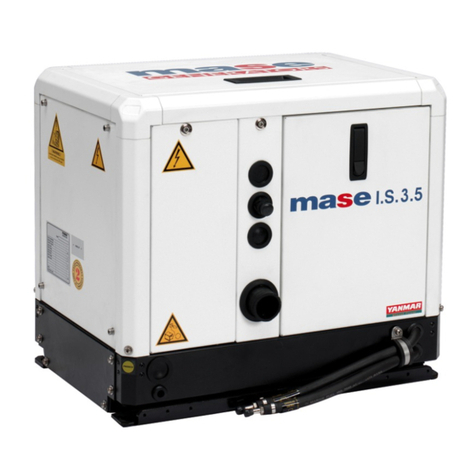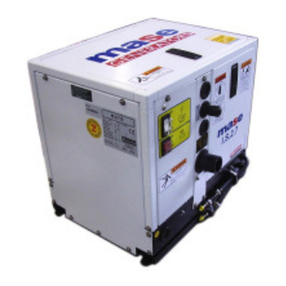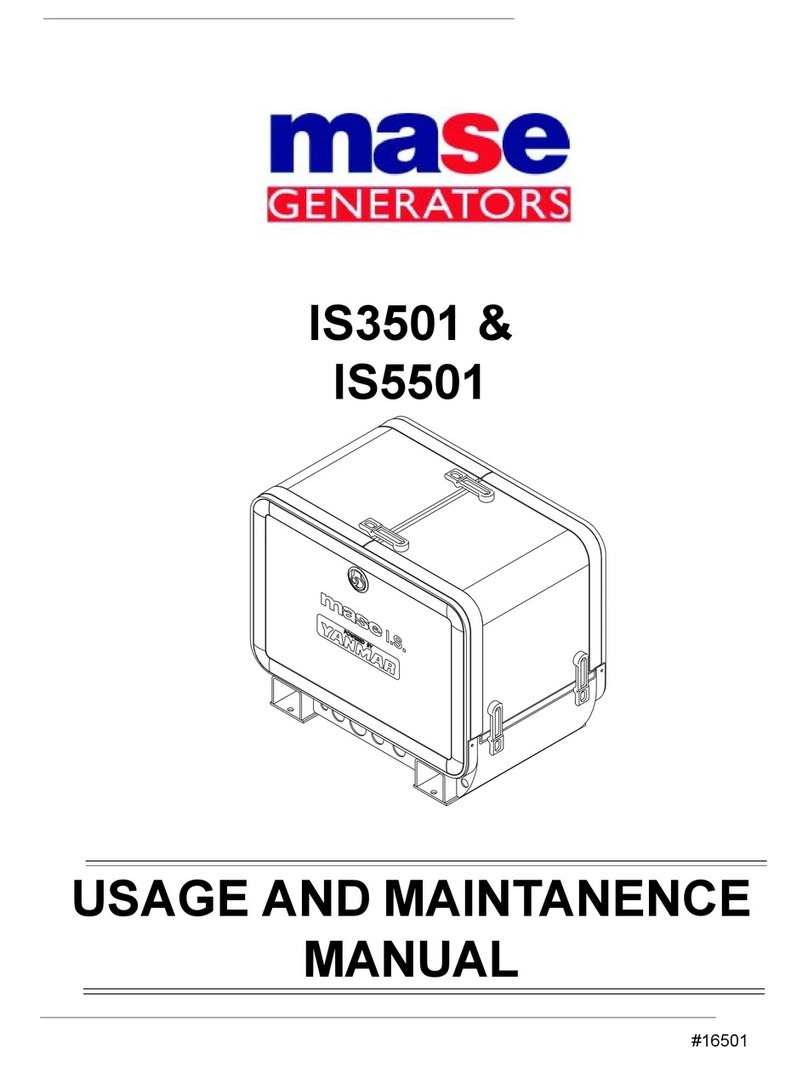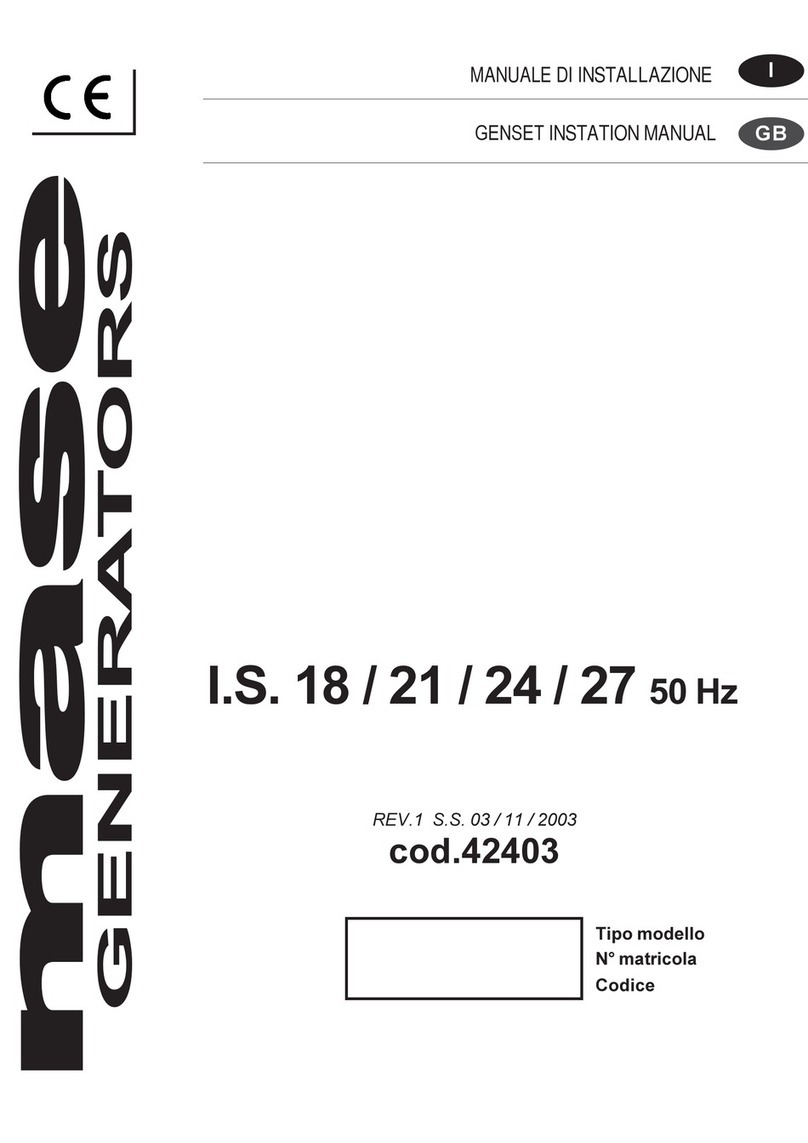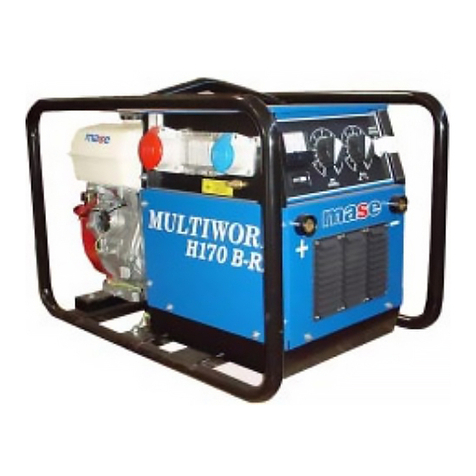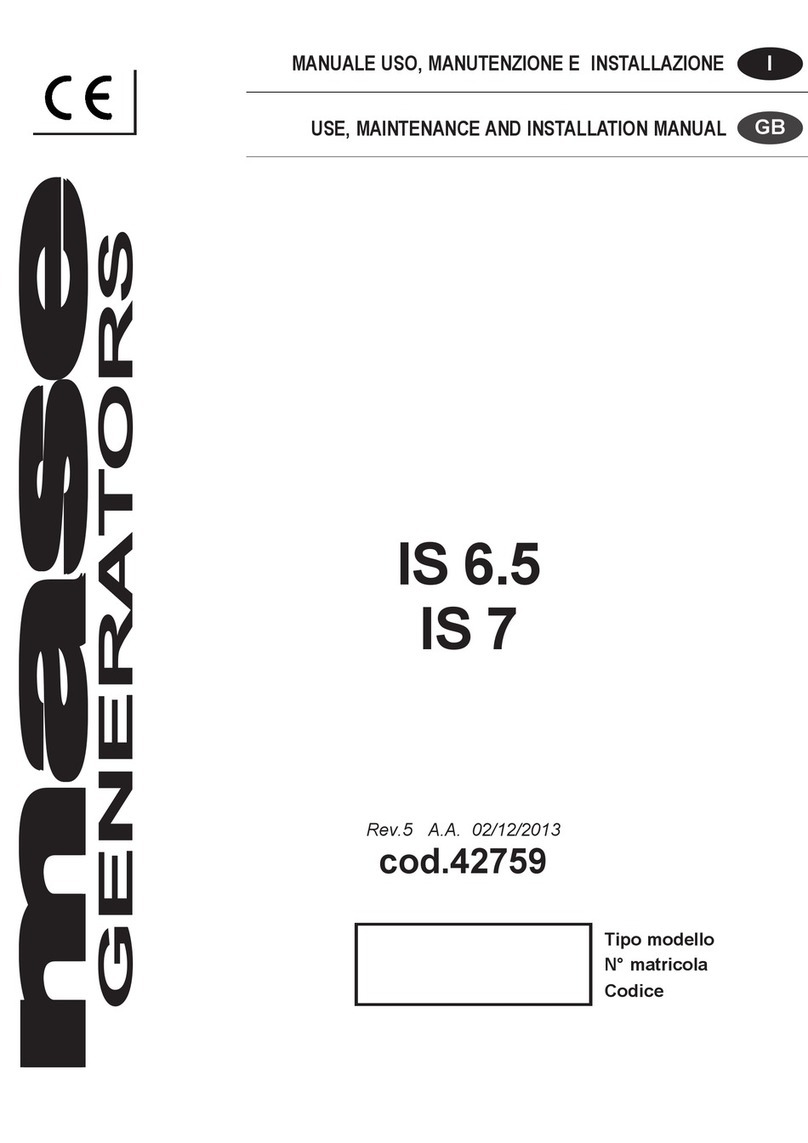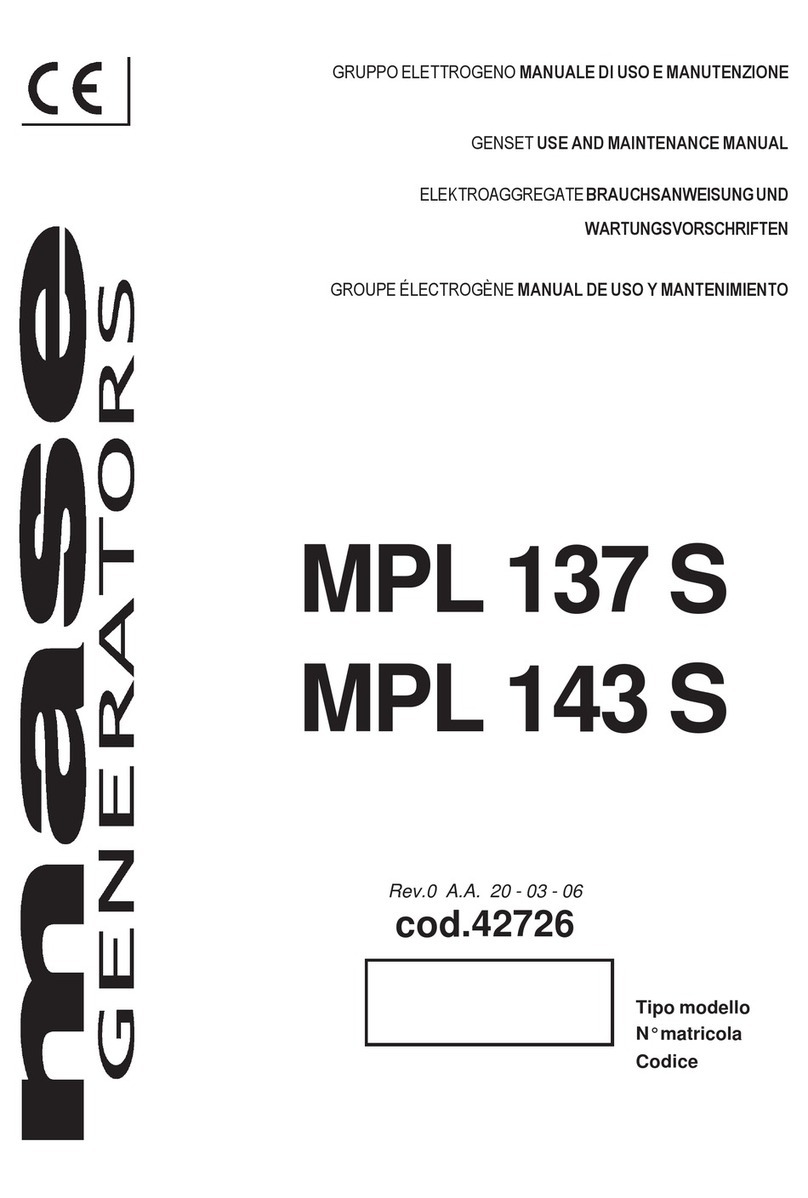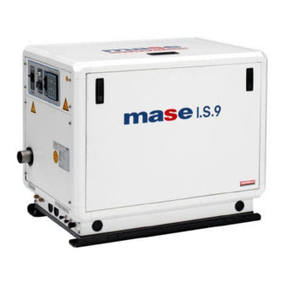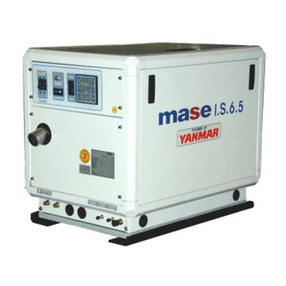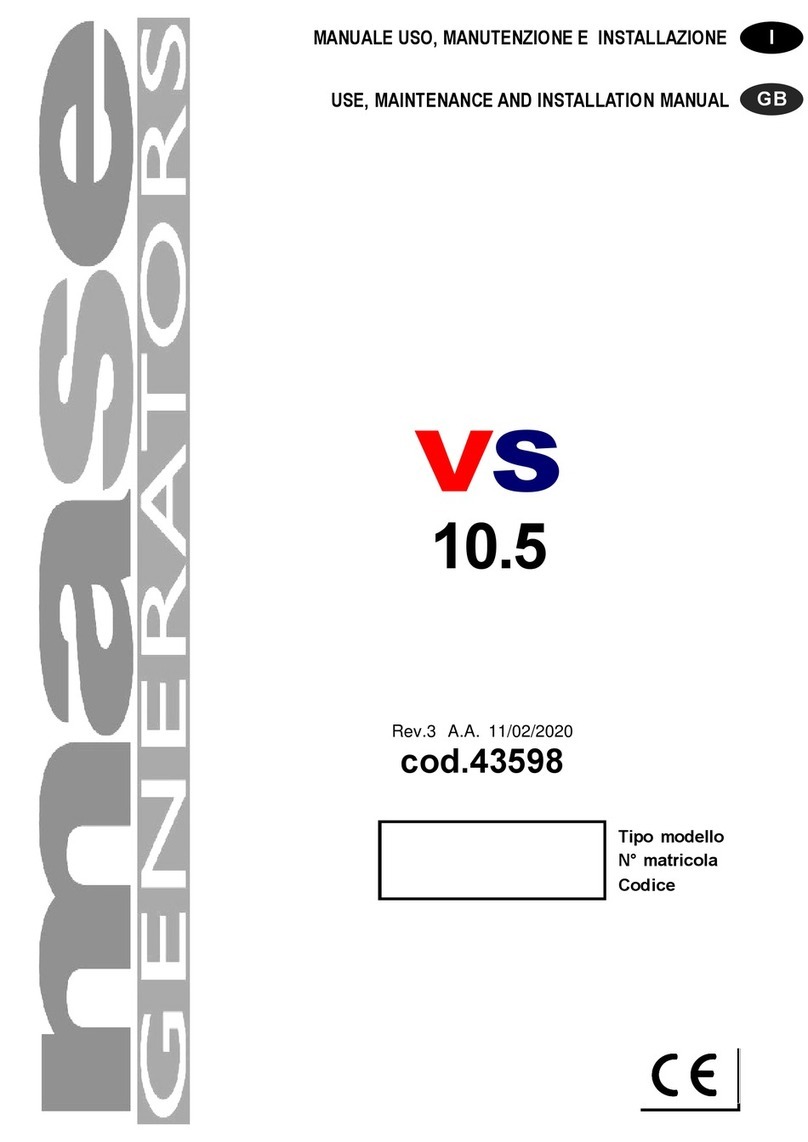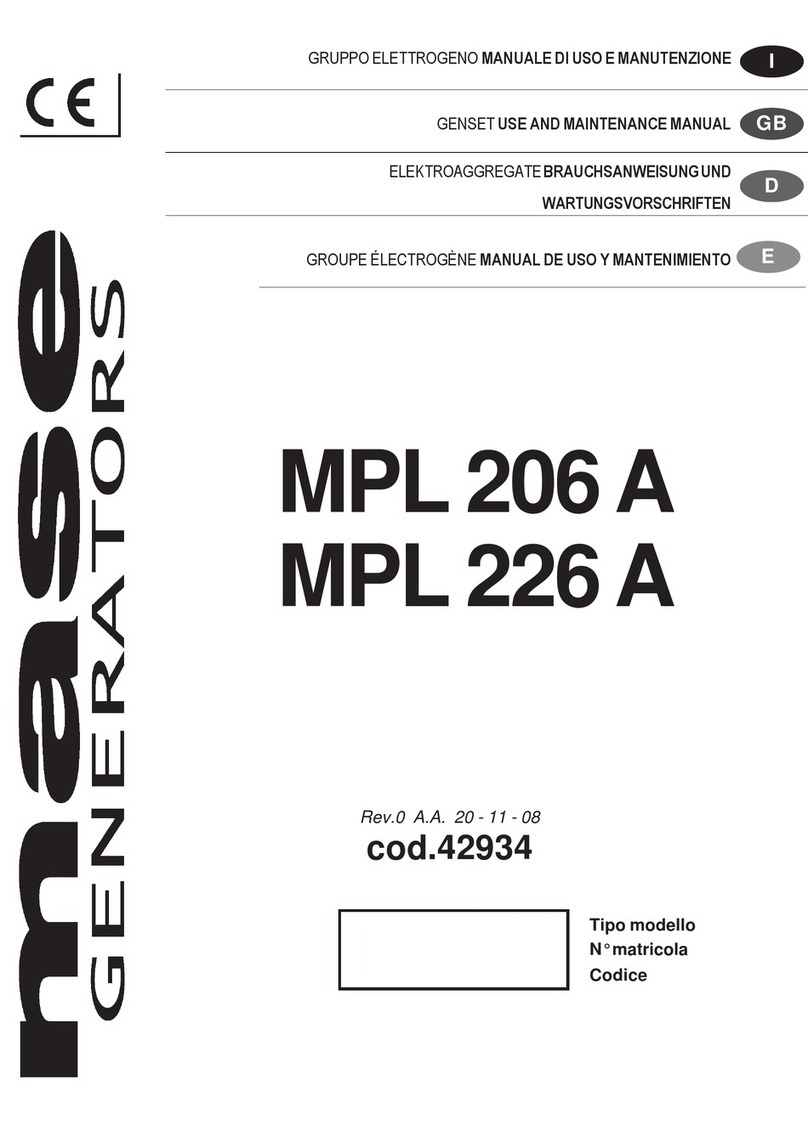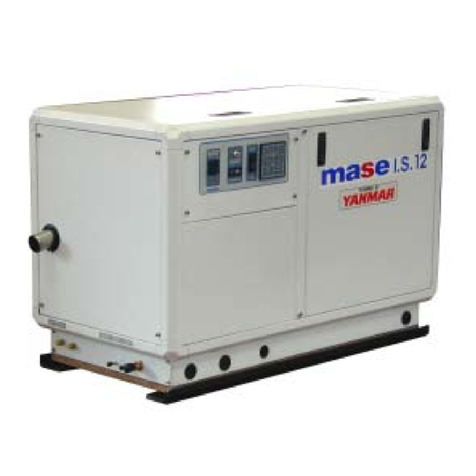GENERATORS IS 2500 - 3500 - 4500 - 5500
- 10 -
2.4. Componenti
1-Presa a mare del tipo diretto 1/2".
IMPORTANTE
Nel caso il gruppo venga installato ad un altezza
superiore ad 1 Mt. sopra la linea di galleggia-
mento, è necessario montare una valvola di non
ritorno dopo la presa a mare (fig. 6 rif. 1) che
impedisce lo svuotamento del circuito acqua a
motore spento. In caso di svuotamento, durante
l'avviamento si può danneggiare la girante della
pompa acqua; per lo stesso motivo all'atto del
primo avviamento del gruppo è necessario prov-
vedere al riempimento manuale del tubo di aspira-
zione dalla valvola alla pompa.
2-Rubinetto a sfera (Generale impianto) 1/2".
3-Rubinetto a sfera (Spurgo impianto) 1/2".
Serve a vuotare l'impianto di raffreddamento del
gruppoelettrogenopermanutenzionigenerali oper
periodidilungainattività.
4-Filtroacqua(ispezionabile).
Deveproteggereefficacementeilcircuitodiraffred-
damento dall'ingresso di fango, sabbia e alghe.
IMPORTANTE
La rete filtrante dovrà essere del tipo fine.
Si consiglia il tipo con passo 2 - 470 micron,
misure diverse non consentirebbero un buon
rendimento del filtro.
5-Valvolaantisifone:èunavalvolacheriportaapres-
sione atmosferica il circuito di raffreddamento a
motorespento,evitandoilfenomenodi sifonaggio.
Vaobbligatoriamenteusataquandoilgenerato-
re è installato col miscelatore di scarico sulla o
sottolalineadigalleggiamento,evaposizionato
adalmeno50cm.sopraillivellodelmare.(vedifig.
8/9).
IMPORTANTE
Il condotto di drenaggio della valvola antisifone
deve obbligatoriamente viaggiare al di sotto della
stessa impedendo così accumuli di acqua nel
condotto, che deve rimanere sempre vuoto, per
permettere il passaggio di aria nello stesso al
momento dello spegnimento del gruppo
( vedi fig. 7).
N.B.: Si consiglia di portare il condotto di drenaggio in sentina
perchè dallo stesso, durante il normale funzionamento, potreb-
bero fuoriuscire piccole quantità di acqua.
La cassa è già predisposta con n° 2 fori per l'allacciamento della
valvola antisifone (fig. 9).
I
2.5. Sistema di scarico
Il sistema di scarico gas di combustione/acqua del
generatore deve essere indipendente da quello dei
motoriprincipali.
IMPORTANTE
La lunghezza del tubo dal punto più alto del
condotto di scarico alla marmitta non deve supe-
rare mt. 2. Questo per evitare che allo spegnimen-
to del gruppo l'acqua rimasta nel condotto di
scarico possa rifluire al motore dopo aver riempi-
to la marmitta a barilotto.
1-Marmittaa barilotto (capacità3.5litri).
Attenua la rumorosità dello scarico ed impedisce il
riflusso dell'acqua verso il motore. Si consiglia di
installare la marmitta a non più di 1 mt. dal genera-
toreediposizionarlaadunaaltezzaugualeoinferio-
re a quella del basamento del generatore.
2-Silenziatore.
Riduce ulteriormente la rumorosità. Si consiglia di
installarloadunadistanzanonsuperioread1mt.dal
bocchettone di scarico a mare.
3-Bocchettone di scarico a mare.
Va installato in posizione tale da essere sempre
soprail livello delmare.
3.0 CIRCUITOCOMBUSTIBILE
L'alimentazione del gruppo è a gasolio, ed avviene
tramite i raccordi contrassegnati dalle diciture "GASO-
LIO"e"RITORNO GASOLIO"(fig.10,rif.1-2);quest'ul-
timoserveperilritornodelcombustibileineccesso.Nel
collegamento al serbatoio combustibile è necessa-
rio inserire un filtro combustibile; è inoltre buona
normainserireunrubinettosullalineadialimentazionea
valledelserbatoio,edunavalvolaunidirezionale(dinon
ritornosoloperdislivellisuperioria50cm)ondeevitare
losvuotamentodell'impiantocombustibileperqualsiasi
causa. Utilizzare una valvola con apertura 50 millibar.
Itubidelcombustibiledevonoessereingommaresisten-
te agli idrocarburi, di diametro interno 6 mm.
IMPORTANTE
Il gruppo è munito di spurgo nafta automatico.
Qualora fosse necessario lo spurgo manuale
premere il pulsante "ON" sul pannello comandi ed
attendere 30 secondi prima di avviare il gruppo.
IMPORTANTE
Il filtro combustibile deve essere del tipo a cartuc-
cia con grado di filtraggio da 5 a 10 micron.


